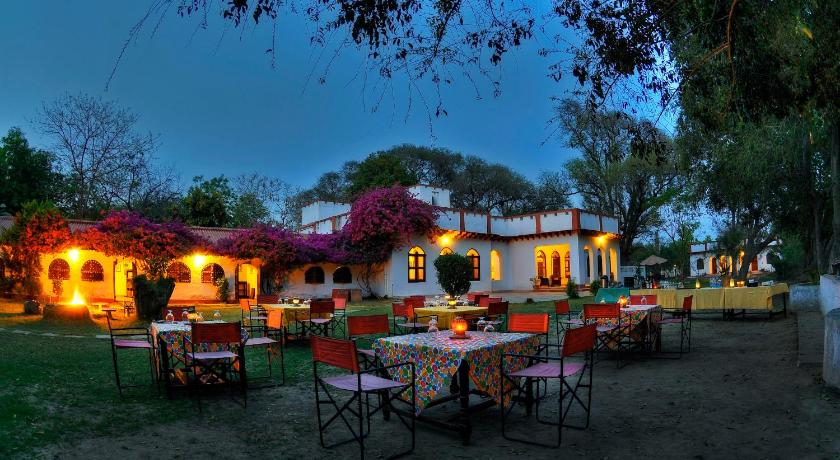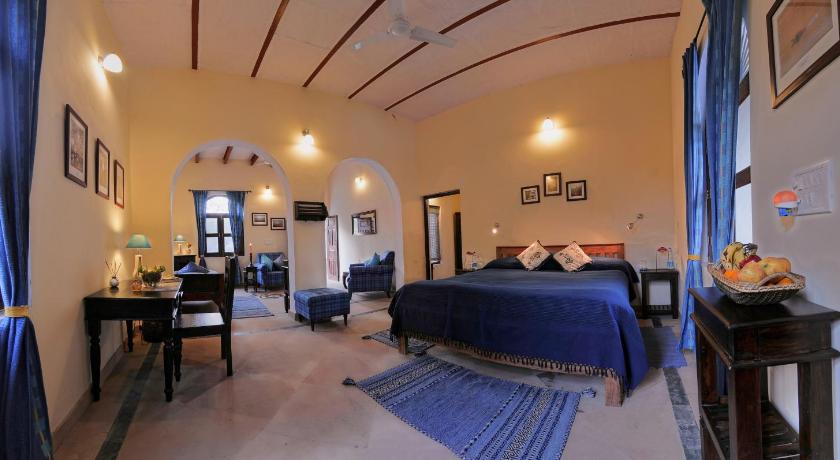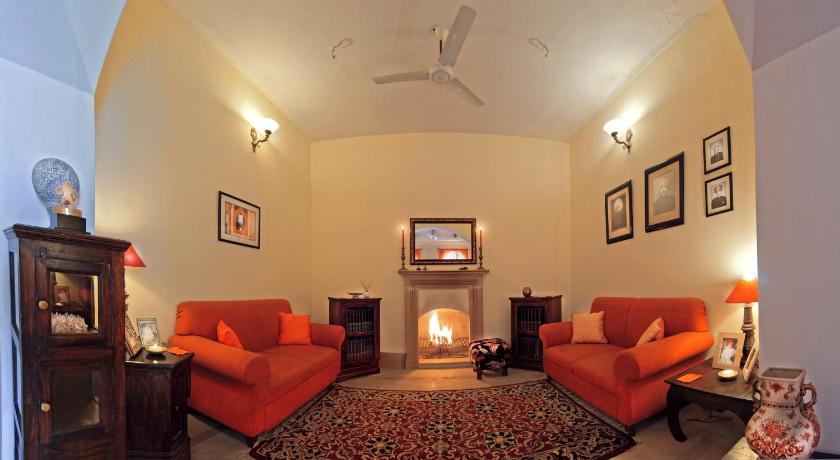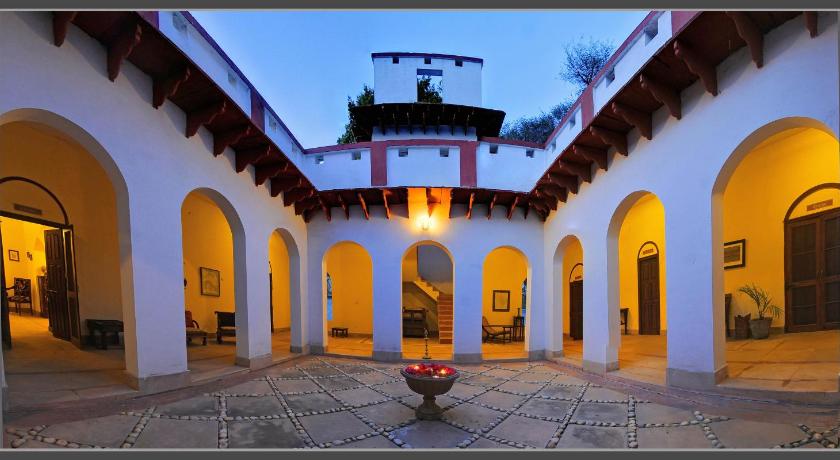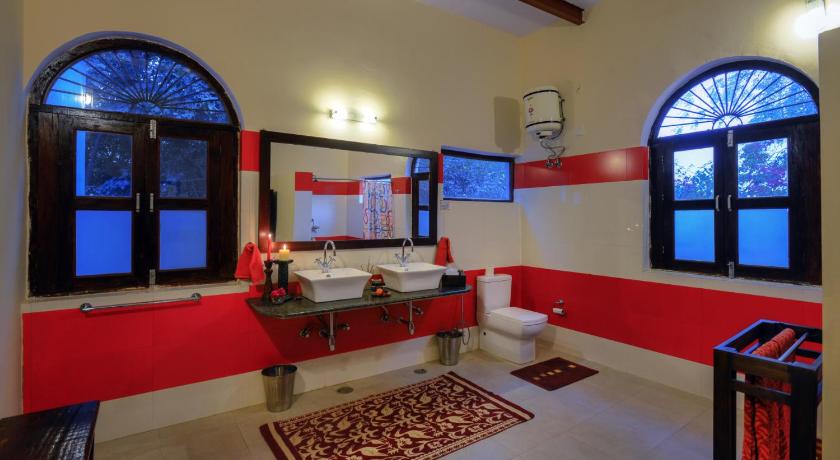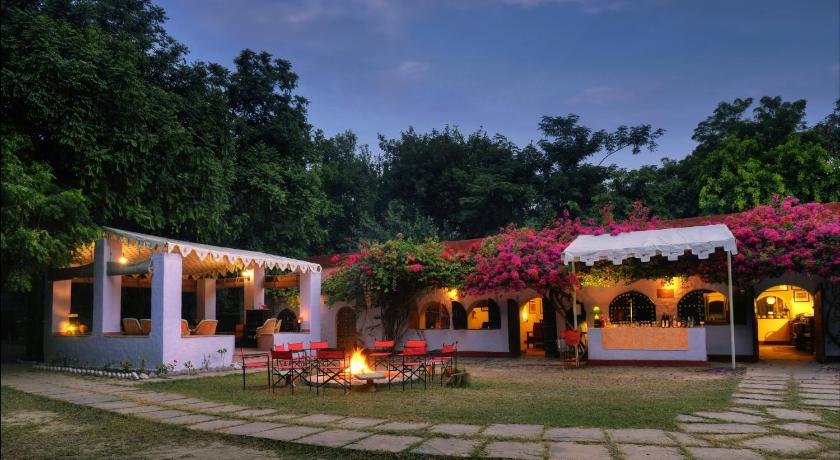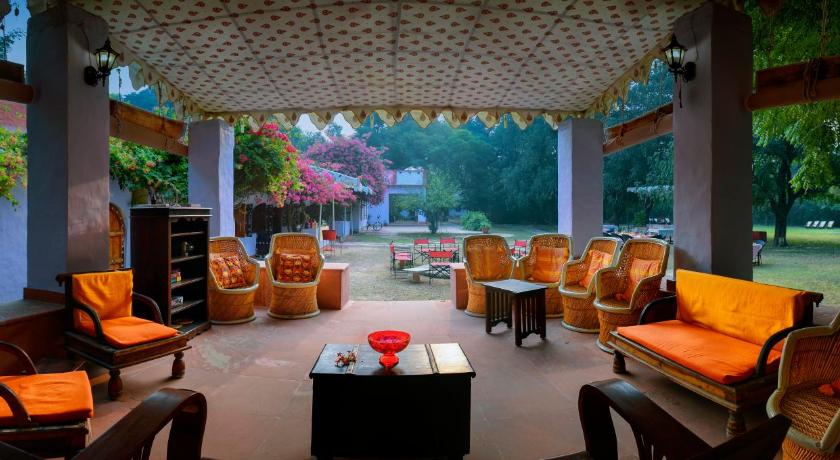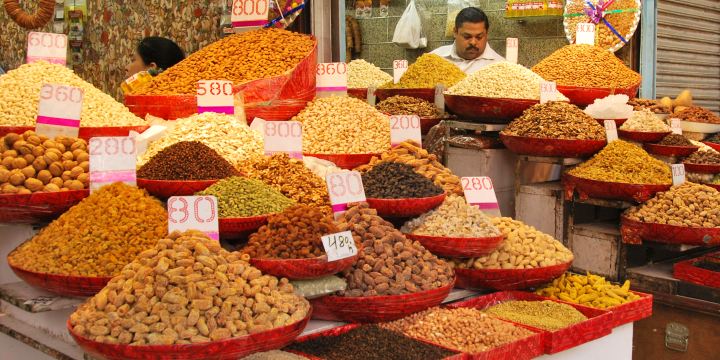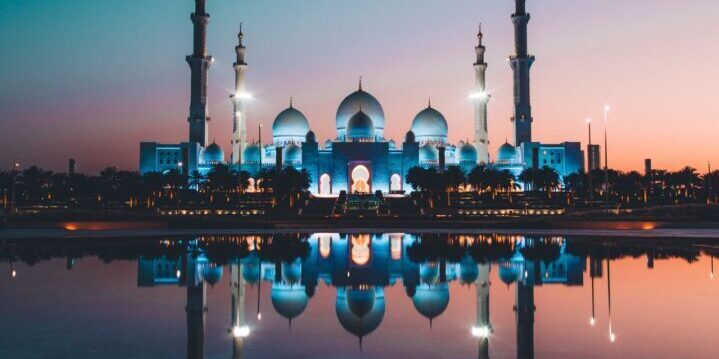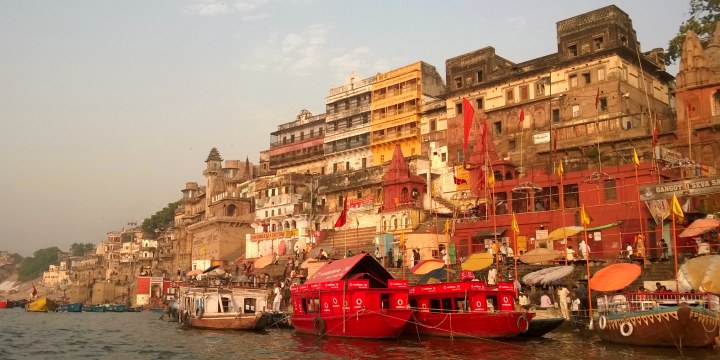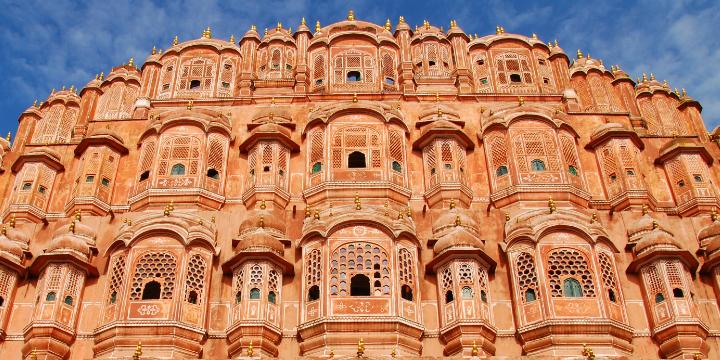India
India is the most colorful and diverse country in the world. It’s filled with iconic sights, ancient religions, important history, exotic wildlife and cultures defined by a pure sense of hospitality to visitors. We can design a truly amazing trip here no matter what your interests are.
Take a look at the sample itineraries below that you can use as a starting point to design your perfect trip in Indonesia. We offer 2 types of tours: Group Tours and Private Tours.
Group Tours
Group tours (labeled in red) take place on specific dates beginning in the arrival city and have limited capacity of typically only 8 to 12 people. Some may be led by an experienced western guide, others will use local guides. Some group tours can be done as a private tour. Just ask.
Private Tours
Private tours (labeled in grey) are sample itineraries to spark ideas for your trip. The include a carefully curated schedule of activities. We customize them for when you’re able to travel and for how many people are in your group. Most tours and activities are privately-guided and all internal transportation is included. Prices will change depending on the season, hotel selections, group size, and other factors. We can always adjust these itineraries to add or remove days, destinations, activities, and combine them with other itineraries.
India Tour Itineraries:
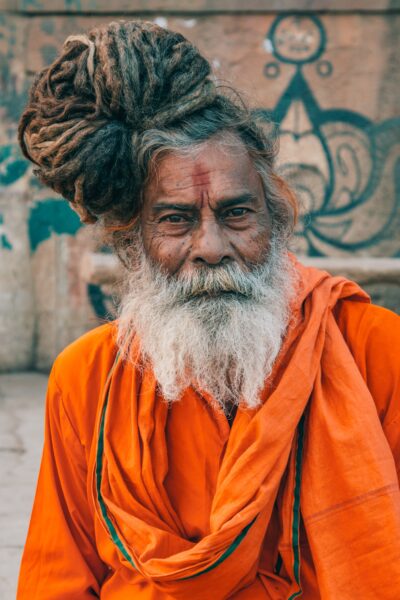
India Weather and When to Go
The best weather in India is generally between October and March. In northern India, avoid the months of April and May as it can get oppressively hot—120 degrees F (50 degrees C) is not uncommon. In June, the monsoon season arrives and lasts through September, cooling things off a bit, but with daily rain showers. In the south, the monsoon is a bit more complex, with a temporary dry period for most of the month of September, before get
India is a large country with a diverse range of climates, so the weather can vary significantly depending on where you are and when you visit. Here is some general information about the weather in India:
- Monsoon season: India experiences monsoon season from June to September, with the heaviest rainfall occurring in July and August. During this time, many parts of the country experience heavy rainfall and flooding, particularly in the eastern and northeastern regions.
- Winter season: The winter season in India runs from November to February, and temperatures can get quite chilly in the northern and central parts of the country. The southern and coastal regions tend to have more moderate temperatures during this time.
- Summer season: The summer season in India runs from March to May, and temperatures can get very hot, particularly in the northern and central parts of the country. The southern and coastal regions tend to have more moderate temperatures during this time.
If you want to visit India and avoid the monsoon season, the best time to go is during the winter or early spring (November to March). This is also the peak tourist season, so you may want to book your travel arrangements in advance. If you don’t mind the heat and want to avoid the crowds, you could consider visiting during the summer or early fall (April to October). Keep in mind that temperatures can be very high and the monsoon season may affect some areas during this time.
Our Recommended India Hotels, Lodges, and Resorts
We’ve inspected and stayed in hundreds of hotels throughout the country. We will not only recommend which hotel may best for you, but which room category. Here’s a few that we highly recommend based on the quality of the rooms and facilities, cleanliness, standard of service, and locations. These aren’t always the cheapest hotels, but they are among the best hotels in their category. We tend to have a preference for high-quality boutique hotels that have a great location, excellent food, and a local ambience, or perhaps a colonial or Raj-style atmosphere that conjure images of former eras.
Chambal Safari Lodge, Chambal, Uttar Pradesh
The Chambal Safari Lodge is an oasis of peace, tranquility and gracious hospitality. This family-owned and run lodge on 35 acres near Bateshwar and just an hour from Agra, is one of the best places to spend 3 days in India watching wildlife, exploring ancient forts, local villages, and attending the Bateshwar Cattle Fair and Festival. It has been meticulously restored by it’s owners Ram Pratap Singh, and his environmental scientist wife, Anu, who represent the epitomy of environmental conservation and sustainability.
Visa Requirements to Enter India
Travelers need a visa to visit India for Business or Tourism. An India eVisa is the fastest and easiest way of obtaining a visa for India because travelers can submit their application and supporting documents online. Once the application is approved, travelers receive their eVisa confirmation electronically. A valid visa is required to board the flight. If the visa is expired or doesn’t match the traveler’s passport information, travelers will not be able to board their flight. Entry to India with an eVisa is supported at 28 airports and five seaports. Click the link below to apply for the eVisa.
Covid Restrictions as of January 04, 2023
Most travelers don’t need a negative COVID-19 test result before traveling to India. However, travelers aged 12 and over transiting through high-risk countries (China, Hong Kong, Japan, South Korea, Singapore, Thailand) must have a negative COVID-19 RT-PCR test result. Travelers must take the RT-PCR test a maximum of 72 hours before the scheduled departure to India. Travelers must upload a negative COVID-19 RT-PCR test result on the Air Suvidha portal.
Travelers don’t need to quarantine on arrival in India. However, symptomatic travelers must immediately quarantine in a designated quarantine facility subsequently for follow-up treatment. After arrival, travelers must self-monitor their health. Travelers must report to their nearest health facility or call the national or state helpline number in case of COVID-19 symptoms.
It is important to keep in mind that the requirements for travel to India, including visa and COVID-19 related requirements, may change over time due to the ongoing pandemic. It is recommended that you check the latest information from the Government of India and the embassy or consulate of India in the United States before making travel plans.
All travelers must undergo temperature screening on arrival in India.
Travelers are recommended to wear masks in public places, such as urban areas, indoors, and on public transportation. However, travelers must wear masks in flight and at all points of entry.
For full details and exemptions, see:
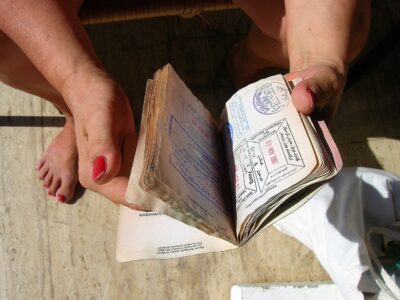
Common Questions and Answers about India
What are the typical costs of your India private tours?
If booking a private tour with us, costs can range from $350/day/person for staying in nice 3-star quality hotels to over $500/day/person in high-end luxury hotels. Staying in small luxury boutique hotels can cost an average of $400 to $500/day/person. These cost estimates include not just accommodation, but also internal flights, airport transfers, tours and activities, entrance fees, private guides, and private vehicles with driver.
What are the benefits of a private tour?
There are so many that it’s hard to quantify, but here’s a few major benefits:
- The tour is customized for your interests, which means you get to see and do the things you’re most interested in.
- Unique, curated activities that we’ve vetted for you such as cooking classes, meeting with royal families, and more.
- You’re not running on a fixed daily schedule, which means you have flexibility to stay as long as you want or move on early from something or even skip it altogether if that’s what you decide on the spot.
- We’re able to design the activities at popular sights to avoid the crowds.
- The responsiveness and service that we provide is the best anywhere!
Is the water safe to drink?
In general, it is not safe to drink tap water in India. The quality of tap water in India varies widely depending on location, and it is not treated to the same standards as in many other countries. In some areas, tap water may contain contaminants or bacteria that can cause illness.
If you are traveling to India, it is recommended that you drink bottled water or water that has been properly treated and filtered. Bottled water is widely available in India, and it is generally safe to drink. You can also consider using a water filter or purification tablets to treat tap water before drinking it.
However, it is also important to be careful when using ice in your drinks, as it may be made from tap water.
It’s best to use bottled or purified water in hotels to drink…and brush your teeth.
Is it possible to use my mobile phone from North America in India?
Yes, 3G and 4G connectivity is very good in India. Some providers, like T-Mobile allow for free unlimited data internationally, though it is usually at a 2g speed. However, that’s often good enough for texts and emails, using Google maps, and some browsing. If you’re staying long enough and always want good data access while you’re out and about, buy a local SIM card with a data plan for your phone. They’re quite inexpensive.
What electrical adapters are needed?
Almost all hotels have US-style outlets that are fine for plugging in electronics. Electrical outlets in India typically use a type D plug, which has three round pins arranged in a triangle. The standard voltage in India is 230 V, and the standard frequency is 50 Hz. If you are traveling to India from a country with a different electrical system, you may need to use an adapter to be able to use your electronic devices.
It is always a good idea to check the specific requirements for the country you are visiting before you travel, to make sure you have the necessary adapters and converters for your electronic devices. You can find more information about the electrical system in India, including the types of plugs and sockets used, on websites like VoltageGuide or TravelAdapters.com.
What’s the best way to get local currency?
The Indian currency is the “rupee”, Rp. Notes come in 1 to 2,000 denominations, with 10, 50, 100, 500, and 1000 being the most common.
ATMs are the best way to get local currency and are plentiful but look for ones that accept international debit cards. Be sure to withdraw local currency in larger cities and mid-sized towns as smaller villages are not as likely to have ATMs.
You can also exchange US dollars cash at banks, currency exchange vendors, and hotels. Be sure to have notes that are in pristine condition. Worn and torn notes may not be accepted.
Upscale hotels, shops, restaurants, and markets will accept credit cards. However, small shops and restaurants will not. Shopkeepers are often reluctant to make change for larger notes of 500 Rp and above. Be sure to keep on hand plenty of 100 Rp and lower notes for shopping in local markets.
Do I need to tip?
Tipping is expected by private guides and drivers, however, the amount depends on the quality of service. Generally for private guides, we recommend about $10 per person per full day in your group and about $3 to $4 for drivers. For example: if you’re a couple and you’re in New Delhi for two days and have a full schedule of tours and airport transfers and you’re very happy with everything, tip the guide about $40 and the driver about $15.
Elsewhere such as restaurants, taxi drivers, and hotel staff, tipping is not expected but can be an appreciated surprise. Try to give the money directly to the person you want to tip so that you can be sure they get it. Upscale restaurants will add a service charge to bills on top of taxes.
Call us at 206-568-0710 or fill out the form below. We’ll get back to you within 1 business day!
Please provide as much information as you can so we can generate some ideas before contacting you. For example:
- Number of travelers – adults and children with ages
- When you want to travel – are your dates fixed or flexible?
- Destinations of interest – country or countries, plus destinations within a country
- Activities of interest – like beaches, wildlife, hiking, shopping, art, local culture, adventure, etc.
- Purpose of trip and Special Occasions – holiday, honeymoons, important birthdays, anniversaries, etc.
- Approximate budget per person
Submit Your Inquiry Here
Copyright © Red Lantern Journeys. All Rights Reserved







